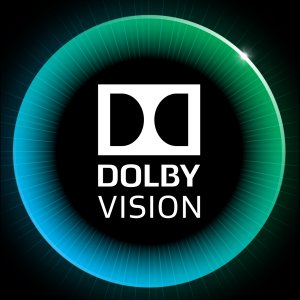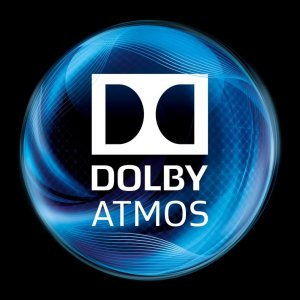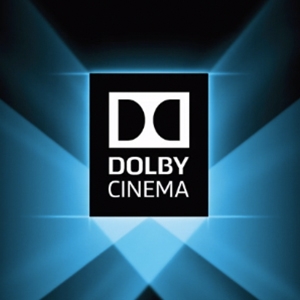Dolby Vision is one of the key HDR (high dynamic range) formats and in this FAQ we will explain what you need to know about Dolby Labs’ approach to HDR video. Read FlatpanelsHD’s HDR article for background on HDR on TVs.
Yoeri Geutskens has worked in consumer electronics for more than 15 years, on products and technologies including DVD Recorders, Super Audio CD and Blu-ray Disc. He writes about high-resolution audio and video. You can find his blogs about Ultra HD, 4K, HDR and related developments at
@UHD4k and
@UltraHDBluray.
In a nutshell, what is Dolby Vision?
Dolby Vision is Dolby Labs’ technology for High Dynamic Range (HDR) video.
While HDR for video is not the same as HDR in photography, they roughly aim to achieve the same goals – capture a greater dynamic range that holds more detail in bright areas and dark areas of a scene at the same time.
This is how Dolby presents Dolby Vision HDR but consider it a simulation since you are viewing it on a SDR display.

Is Dolby Vision the only HDR video solution in town?
Not quite. There are a number of proposals by different companies.
The key ones are:
- PQ (Perceptual Quantizer) family:
- Dolby Vision by Dolby Labs
- HDR10
- Prime Single by Technicolor and Philips
- HLG: Hybrid Log Gamma by BBC and NHK
The Blu-ray Disc Association has defined HDR10 as mandatory for the new
Ultra HD Blu-ray format, meaning both discs and players have to support it. The BDA has designated two other HDR standards as optional, namely Dolby Vision and
Philips’ HDR format.
There’s a wide range of Standards Defining Organizations (SDOs) working on specifications and guidelines for HDR video including SMPTE, ATSC, DVB, ITU and ARIB. For a complete overview check
‘The State of HDR for OTT and Broadcast’.
How does Dolby Vision compare to HDR10?
Both HDR10 and Dolby Vision are HDR schemes based on what’s called a Perceptual Quantizer or PQ. This technology for an Electro-Optical Transfer Function (EOTF) was developed by Dolby and standardized by SMPTE as
ST.2084.
Overall, there are essentially five proposed ways for implementing HDR:
- PQ without metadata, named PQ10 as proposed by the Ultra HD Forum
- PQ with static metadata, using the SMPTE ST.2086 standard
- PQ with dynamic metadata, using the SMPTE ST.2094 standard
- PQ with an additional layer, as proposed by Dolby and Technicolor
- Hybrid Log Gamma (HLG), as proposed by BBC and NHK, formalized as part of ITU-R BT.2100
HDR10 uses the PQ with static metadata. The HDMI 2.0 standard has been updated to version 2.0a to accommodate this metadata.
Dolby Vision meanwhile can operate in any of the first four modes but typically/ideally uses dynamic metadata in either of two configurations – single layer or double layer.
The fact Dolby Vision and HDR10 use the same SMPTE
ST.2084 standard makes it easy for studios and content producers to master once and deliver to either HDR10 or, with the addition of dynamic metadata or more layers, Dolby Vision. The dynamic metadata is not an absolute necessity, but using it guarantees the best results when played back on a Dolby Vision-enabled TV. HDR10 uses static metadata which ensures it will still look good – far better than Standard Dynamic Range (SDR). Even using no metadata at all, SMPTE 2084 can work at an acceptable level just as other proposed EOTFs without metadata.
There are two types of Dolby Vision:
The single-layer variant is a pure HDR-only video stream whereas the dual-layer type contains an SDR and a HDR signal. Dolby has come up with a single workflow that can simultaneously deliver SDR and HDR (for details, refer to the Dolby Vision white paper; link
below). The signal can be encoded in HEVC or AVC.
Not requiring dual workflows is a benefit for all involved in content production. The system lets the broadcaster choose where to derive the SDR signal. If it’s done at the head-end they can choose to simply simulcast it as another channel or convert the signal to dual-layer single stream signal at the distribution encoder for transmission. Alternatively, the HDR-to-SDR conversion can be built into set-top boxes. Moreover, the SDR distribution signal that’s derived from the HDR original using Dolby’s content mapping unit (CMU) is significantly better in terms of detail and color than one that’s captured natively in SDR, as Dolby demonstrated side by side at various shows. The metadata is only produced and multiplexed into the stream at the point of transmission, just before or in the final encoder – not in the baseband workflow.
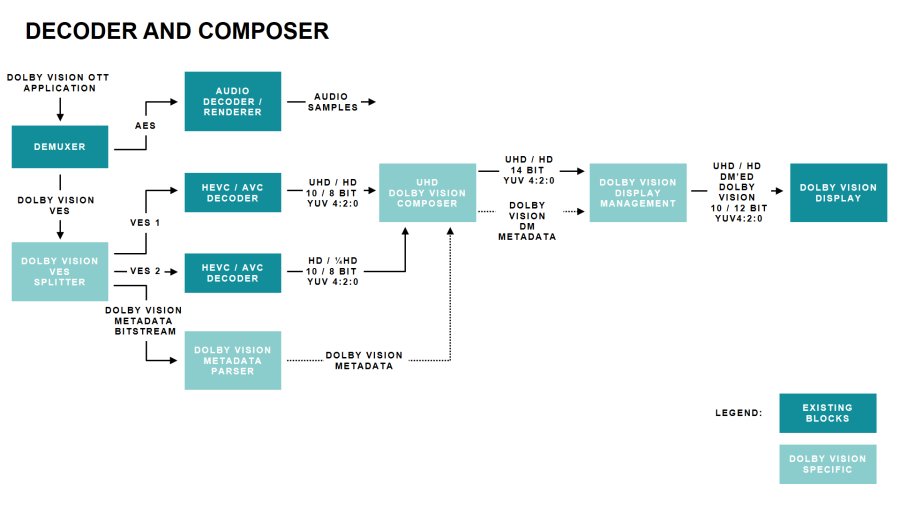
Dolby Vision is the first HDR solution to employ dynamic metadata but it’s no longer alone.
Samsung has developed and proposed an alternative technology for dynamic metadata. Samsung has demonstrated this at NAB 2016 and said they intend to make it an open standard that's free for all to use. At this moment, it's still a
proposal only. For details, see the SMPTE's 'Study Group Report High-Dynamic-Range (HDR) Imaging Ecosystem'
, section A.4 (page 27/28).
How is Dolby Vision related to Ultra HD Premium? (Competing? Interchangeable?)
Ultra HD Premium is a certification and logo programme offered by the UHD Alliance for products that meet certain standards. Dolby Vision is a technology standard that is licensed by Dolby Labs.
Some articles call both of them certification programmes while
others call both standards, but that’s confused. A certification program for TVs that support Dolby Vision does exist, by the way.
The UHD Alliance has
defined requirements for ‘Ultra HD Premium’ for displays, content and distribution. The HDR requirements for displays specify black level and peak brightness. For content, specific black level/peak brightness and minimum color gamut (DCI-P3) of the mastering display are recommended. For all three categories the spec stipulates use of the SMPTE ST 2084 EOTF. It specifies ST 2084 + ST 2086, which allows Dolby Vision, HDR10 or Technicolor/Philips HDR.
This means for instance that a TV set may be eligible for the Ultra HD Premium logo, the Dolby Vision logo, neither, or both. It depends on its specs. One does not imply the other.
Is Dolby Vision tied to Ultra HD or any specific resolution?
Dolby Vision is thus far found in ‘4K’ Ultra HD TVs and cinemas/theatres but it is flexible for use with different resolutions. While it’s not so likely we’ll see TV makers release HDTV sets with Dolby Vision, it would be possible. More likely you’ll see tablets, notebooks or other mobile devices – possibly with lower resolution than UHD – featuring Dolby Vision. Also future ‘UHD-2’ displays with 7680×4320 resolution, commonly referred to as ‘8K’, could use Dolby Vision.
And although HDTVs with Dolby Vision or any other HDR technology are not foreseen, broadcasts in 1080p HD with HDR are highly probable. That's because many broadcasters as well as satellite and cable operators, faced with limited bandwidth favor broadcasting in HD+HDR over UHD, as HDR adds only between 0 and 20% to the required bandwidth, compared to 300% for UHD.
A
diagram in the
Dolby Vision White Paper mentions two resolutions: UHD and HD. Dolby Vision uses two Video Elementary Streams (VES). The primary one is full resolution (in the diagram UHD or HD) while the secondary VES has one quarter of the resolution (here HD or 1/4 HD, respectively).
Can devices that Dolby Vision always handle HDR10 also?
Not always. Vizio’s 2016 Reference Series is an
example of TV sets that can handle Dolby Vision but not HDR10, at least not at launch, at the time of writing.
Reportedly, this will follow with a future software update. Most of the time however, TVs with Dolby Vision support HDR10. That’s because Dolby Labs has developed a ‘universal playback solution’ for HDR, internally called ‘VS10’. In its press releases, Dolby describes VS10 as follows:
-
“As a universal HDR playback solution, Dolby Vision VS10 offers unique value by combining the ability to play back Dolby Vision content as well as other HDR profiles based on the SMPTE ST 2084 standard through one integrated playback solution. This enables a high-quality HDR experience on products ranging from entry level to high end by leveraging the capabilities of the respective hardware as much as possible.” It may not be clear from this description but VS10 supports HDR10. The playback solution for devices will receive any HDR format based on SMPTE ST-2084 and ST-2086. Of course, it delivers the best HDR experience with Dolby Vision. Devices based on Dolby Vision VS10 will play back a variety of HDR content types, including HDR10 from Ultra HD Blu-ray and UHDA-certified HDR content.
VS10 has been adopted by several semiconductors manufacturers already, including
HiSilicon,
Mediatek,
Mstar and
RealTek. TVs made using these chipsets should be able easily to support HDR10.
Does Dolby Vision require 12-bit video?
Dolby uses 12-bit color depth for cinematic Dolby Vision content to avoid any noticeable banding but the format is agnostic to different color depths and works with 10-bit video as well.
In fact, Dolby recommends 10-bit color depth for broadcast.
Is Dolby Vision for cinema the same as for home?
No, Dolby Vision for theatrical and home delivery are very different in many respects such as the difference in color bit depth above. Moreover, the dynamic range and color space are different for cinema projection and home displays.
Consequently, colorists need to grade to a different standard for cinema and home releases.
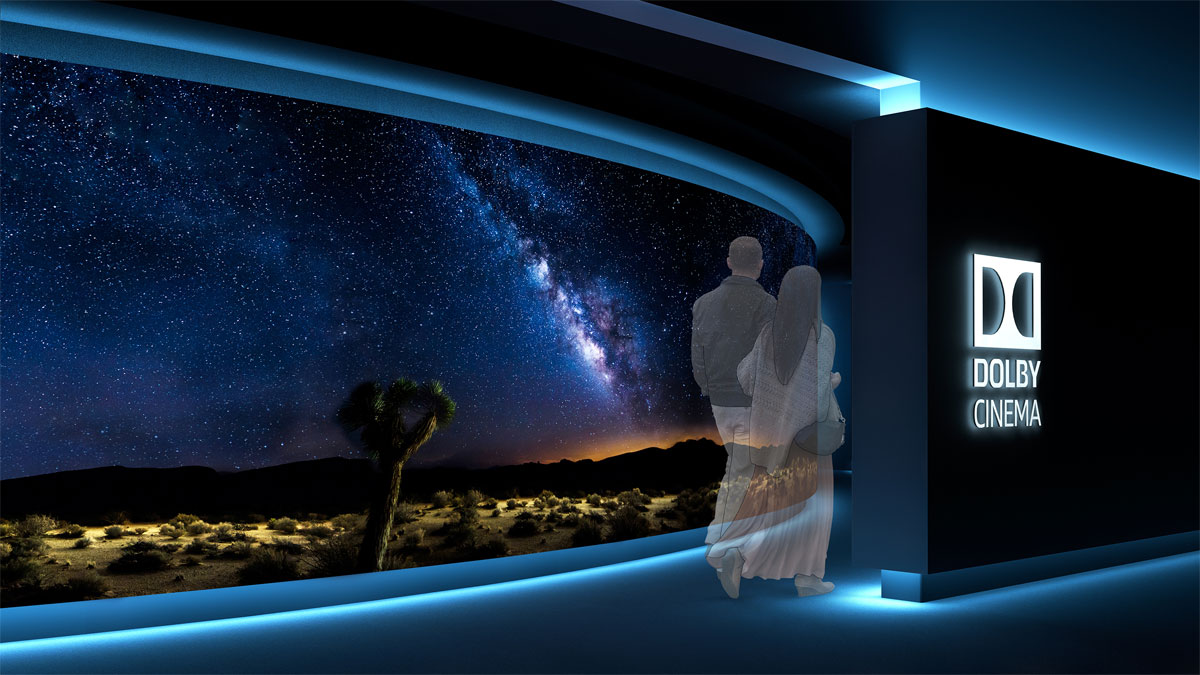
What version of HDMI does Dolby Vision require? (dynamic vs. static metadata)?
During the color grading process in post-production, the Dolby Vision workflow enables the colorist to perform a scene-by-scene analysis of the particular look that they are going for. Once determined, a set a metadata is generated for this scene, then married to the picture and transmitted on a frame-by-frame basis. This is why the type of metadata discussed here is referred to dynamic metadata. This concept is specific to Dolby Vision and adds a layer of performance and fidelity on top of other concepts that only use static metadata.
In addition to the scene-based dynamic metadata mentioned above, there are also some static metadata parameters, such as specifications of the mastering display used during the color grading process. This data does not change for the duration of the program and is hence called static metadata. This is data can be carried via the existing HDMI standard.
Dolby Vision does not require HDMI 2.0a or 2.1. It embeds the metadata into video signal. Knowing that previous versions of HDMI would not pass the Dolby Vision dynamic metadata, Dolby developed a way to carry this dynamic metadata across HDMI interfaces as far back as v1.4b. The HDMI specification is now catching up with v2.0a supporting static metadata and future versions expected to support dynamic metadata as well. Dolby’s intent is not to compete with HDMI but merely to enable deployment of a full Dolby Vision HDR ecosystem without having to wait for HDMI standardization to catch up. Dolby was and is directly involved in standardization of the current and future versions of HDMI.
In practice, most Dolby Vision content is in Ultra HD and requires HDCP 2.2 copy protection, which is only available on HDMI 2.0 and up.
Note that only external sources like Ultra HD Blu-ray players and streaming devices such as Roku or Amazon Fire TV rely on HDMI connections to feed the video to a TV set. For streaming apps like Netflix, Amazon Prime, Vudu and M-GO the HDMI version is irrelevant when the app is running on a Smart TV because the HDR signal can bypass HDMI completely.
Do both source device (player) and display device (TV) need to have Dolby Vision built in?
The Dolby Vision playback process consists of two distinct functions: decoding and display mapping.
Decoding always happens in sources devices before HDMI transmission. HDMI always carries decoded video, never a bitstream in the case of video (audio is different). Therefore, it is necessary to perform the decoding function also for Dolby Vision in the Blu-ray player, set-top box, game console etc. This is also where graphics overlays such as on-screen menus etc. get handled. This is particularly challenging for HDR content and Dolby’s playback solution is specifically designed to handle this for any input type – Dolby Vision, HDR10 or SDR (standard dynamic range) – as well as any type of TV set – HDR or non-HDR.
The display mapping happens in the device with the display. This is where dynamic range and color gamut of the incoming content get mapped to the capabilities of the display. Every TV set is different, which is why this function cannot be performed in the source device while preserving artistic intent and color accuracy.
Every Smart TV with Dolby Vision also has a decoder for the onboard OTT apps, as the video for that type of content is decoded directly in the TV.
Do all Ultra HD Blu-ray players support Dolby Vision?
No.
So far, four Ultra HD Blu-ray players have been launched or announced for introduction soon:
None of these supports Dolby Vision. It is very well possible that other players yet to be announced in the coming months will feature Dolby Vision.
Do OTT video streaming services support Dolby Vision?
Amazon Prime Video and
Netflix support Dolby Vision (as well as HDR10). So does
Vudu.
M-Go and
Sony Ultra support HDR10 but not Dolby Vision. Latter service anyway only works on Sony ‘4K HDR’ Ultra HD TVs, which so far do not support Dolby Vision.

What TVs support Dolby Vision?
LG has incorporated Dolby Vision in all of its
2016 OLED TVs (B6, C6, E6 and G6) and some high-end 2016 LCDs (UH95, UH85, UH77). Vizio has incorporated Dolby Vision in its
2016 M series and
2016 P series as well as the
2015 Reference series that was the first to incorporate the format.
All of LG’s TVs support HDR10, too. Vizio pushed out a firmware update after launch to enable HDR10 on its 2016 M and P series but the Reference series has yet to receive the firmware, making it the only TV to support Dolby Vision exclusively.
TCL has
announced that its coming X1 (USA) / S99 (Europe) series will support Dolby Vision. P&F USA, who has licensed the Philips TV brand in the US, had planned to launch the first Philips TVs with Dolby Vision in July 2016 but these have been
delayed to 2017. Loewe has launched its
first OLED TV that supports HDR10 and Dolby Vision and Changhong
exhibited Dolby Vision-enabled OLED TVs at CES 2016.
Dolby has a
list of partners here.
Does Dolby Vision overrule a TV’s picture settings?
Some UHD TV reviews suggest Dolby Vision dictates picture settings to TVs, overruling any user settings. As this article correctly points out however, Dolby Vision doesn't force the TV to override your settings. The final decision on who has control over HDR mode is up to television manufacturer.
The Dolby Vision HDR standard does not insist that content can lock down your picture settings.
Which movie studios support Dolby Vision?
All of the major movie studios have released films theatrically that were mastered with Dolby Vision. Also, pretty much all of them have announced they’ll make them available as such in ‘digital’ distribution formats. (They mean: OTT streaming and/or downloads.) A fair number of Dolby Vision movies are already available on the VoD services listed above (Vudu, M-Go).
No movies with Dolby Vision have been issued as such on Ultra HD Blu-ray yet. That may have to do with the lack of authoring tools for doing so and/or with the dearth of Ultra HD Blu-ray players that support Dolby Vision. The former issue may be solved shortly, as
Sony DADC and
Scenarist LLC have just announced they will add Dolby Vision support to their Blu-ray authoring tools.
What movies have been made with Dolby Vision?
Wikipedia has a
list of movies made for Dolby Cinema i.e. using Dolby Vision in combination with Dolby Atmos.
Look for these logos:
Will all of these movies be released with Dolby Vision HDR on Ultra HD Blu-ray?
That decision is up to each movie studio. At this moment not all studios listed here have committed to releasing movies on Ultra HD Blu-ray in the first place, although it is expected that by 2017 companies like Disney may join.
Major Hollywood studios who support the format thus far include
20th Century Fox,
Sony Pictures,
Warner Bros.,
Paramount Pictures,
Lionsgate,
MGM Studios and
Universal Pictures. There are smaller ones as well.
Where can I read more?
For more details about Dolby Vision specifically, refer to these sources:
For further reading about HDR video in general and competing technologies, check these articles:
Are there any other resources?
Dolby has published a couple of featurette videos about Dolby Vision (and Dolby Atmos, which together with some specific theater design elements make up Dolby Cinema), including these:
They may be low on technical detail but look spectacular, even while they’re only SDR.
Is this FAQ I’m reading a Dolby publication?
No, it is not; it’s an independent publication. Some of the answers are based on feedback from Dolby. Thanks also to
John Archer for providing input.
My question is not listed here. Now what?
Drop a comment below or even better drop a message at
@UHD4k.
